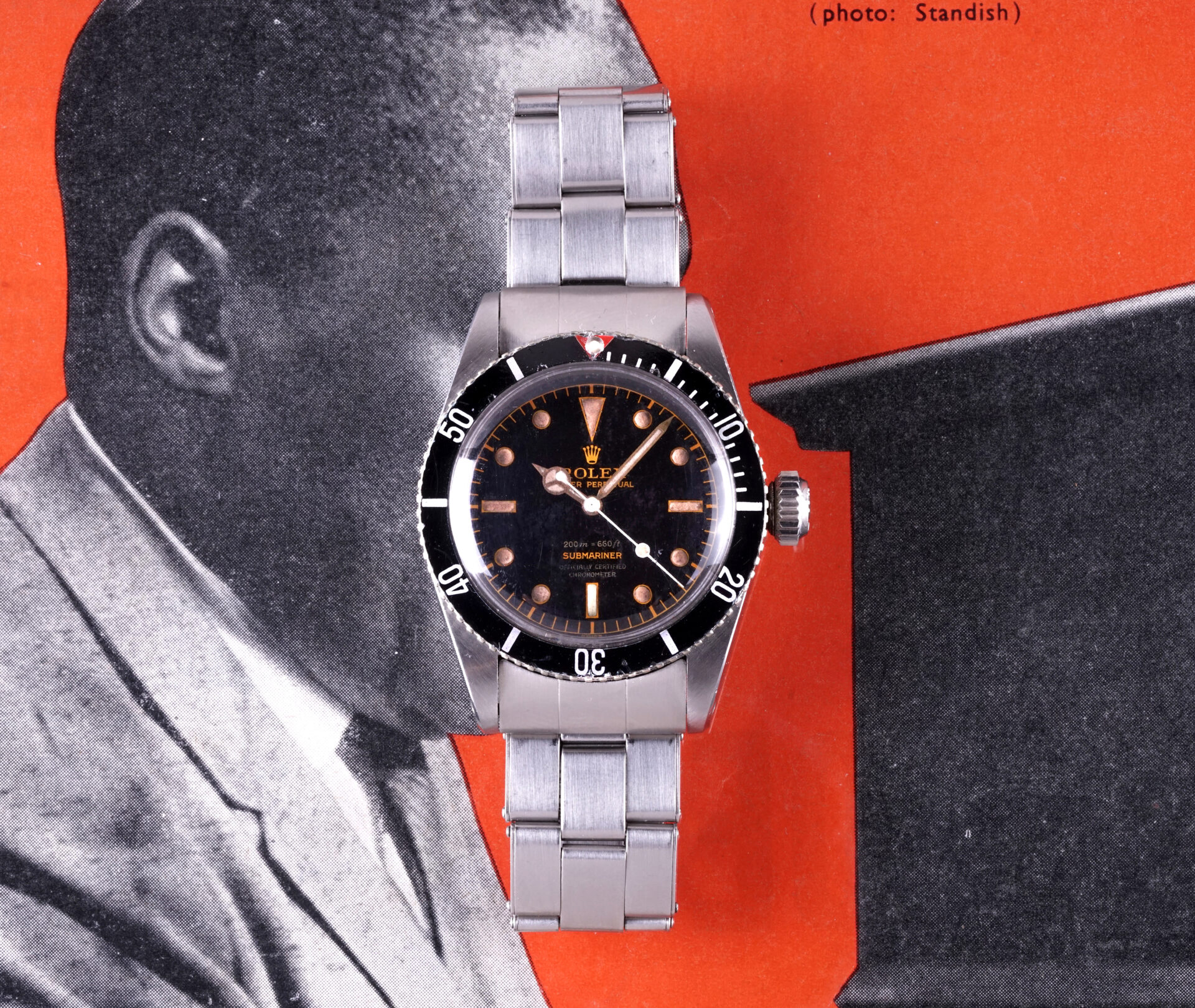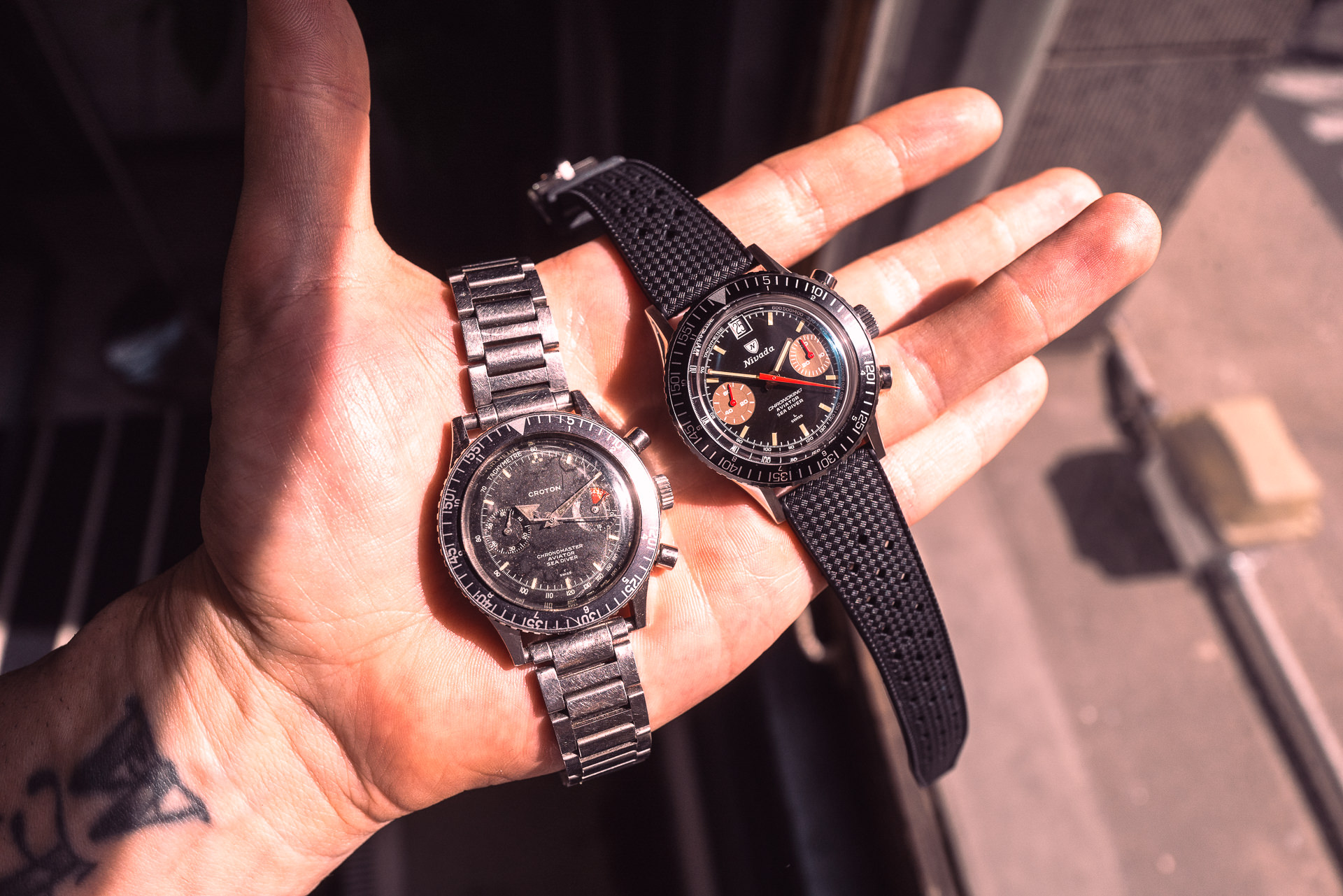Are vintage watches inherently more fragile than their modern counterparts when basic wear-and-tear is taken out of the equation, or is their reputation for fragility simply a matter of collectors being precious?
According to Merriam-Webster, “durable” is defined as being “able to exist for a long time without significant deterioration in quality or value.” By this definition, pretty much all functioning (or even close-to-functioning) vintage watches are relatively durable items in that they’re simply still working and even esoteric models command some monetary value in today’s market. But we’re digging a little deeper here, folks. We need more nuance in the conversation. So what exactly does the word “durable” mean in the context of wristwatches specifically?
Most people would agree that regarding timepieces, the concept of durability relates to the level of resistance a watch has to disruptive and damaging forces – things like impacts, magnetism, abrasions, and moisture intrusion. Can they survive the rigors of life and stay accurate and reliable? Additionally, in order for a wristwatch to be considered durable, it needs to be acceptably resilient to all of these various harmful forces, rather than incredibly resistant to some and highly susceptible to others.
Beyond that, it’s important to address the fact that durability in the context of watches has to include an ability to withstand superficial and cosmetic damage. You can shoot a piece of bullet-proof glass with a gun and it won’t shatter, yet you can often scratch its surface with something as dull as your car keys and successfully leave a mark. Avoiding catastrophic mechanical failures is one thing, but wristwatches – including rugged, tool-focused watches – are aesthetic devices as much as they are functional ones.
So we have to consider that a truly durable watch is one that is acceptably resilient to a wide variety of different potentially damaging forces, impervious to catastrophic mechanical failure, and offers a high level of resistance to superficial wear and tear.
Before we actually start looking at some of the physical differences between modern and vintage watches, it’s important to examine how the purpose of a mechanical wristwatch has evolved over the years. Before the advent of quartz timekeeping, mechanical watches were the only way to keep track of time. However, inexpensive quartz offerings have democratized the wristwatch, leaving mechanical timepieces to be premium items that largely exist within the luxury space or are otherwise aimed at an enthusiast demographic.
Many of us already know the story of how brands like Rolex, Blancpain, Omega, and Tudor once produced watches for various nations’ military branches, yet these same companies now exist solely within the luxury space. Back in the 1950s when Rolex was making its “Big Crown” Submariner, the British Ministry of Defense was one of Rolex’s customers and it was issuing Rolex Submariner watches to some of its divers. With that in mind, even Rolex’s more-affordable sibling company Tudor is now regarded as a legitimate luxury brand, and models like its ultra-successful Black Bay are largely marketed to an enthusiast audience, with their designs based on vintage Submariner watches from the 1950s and 1960s.

Additionally, this shift in target demographic can also be seen among brands that have always catered to lower price points. During the 1970s, Seiko produced its ref. 6105-8110 diver for people who needed a durable, reliable, and highly water-resistant timepiece. It was such a popular choice for military personnel during the Vietnam conflict that it was accurately featured in the period-piece film Apocalypse Now – which resulted in this reference’s “Captain Willard” nickname. However, when Seiko revived this iconic dive watch design in 2019, it wasn’t reintroduced as one of the brand’s budget-friendly divers, but rather as an ultra-premium, limited-edition model that was priced as high as many Grand Seiko watches. In fact, the reissue ref. 6105-8110 actually commands a retail price that places it well above the cost of a clean vintage example!


It’s undeniable that modern watches are more resistant to water and magnetism than their vintage counterparts, and brands love pursuing ever-greater depth ratings as technical showcases and for the sake of advertising purposes. However, for many of these metrics, there exists a ceiling for the amount of actually added utility offered. For example, no one really needs a depth rating of more than 100 meters and after a certain point, additional magnetic resistance is irrelevant unless you live inside an MRI machine.
These days, the role of a true “tool watch” is now largely occupied by inexpensive quartz offerings and the various smartwatches that exist on the market. Nearly everything else falls into either the luxury, fashion, or enthusiast space, and today’s brands are fully aware that they are no longer producing mechanical watches that will be issued to soldiers, but rather are creating timepieces that have a greater chance of being worn to the office and passed around at the next RedBar meetup (regardless of what their marketing materials may tell you). This inevitably informs the manufacturers’ decisions when it comes to design and material choices, and durability likely isn’t one of their core objectives anymore when it comes to creating a high-end timepiece.
Given that so many of today’s watches are based on past designs pulled from their respective manufacturers’ archives, some of the greatest differences between modern and vintage watches has to do with the materials used to construct them. Certain modern materials offer undeniable benefits; for example, silicon movement components can provide a watch with significant magnetic resistance, and modern alloys are more corrosion-resistant than what companies had access to decades ago. And many other modern materials, such as ceramic and sapphire, are used primarily because they offer a high resistance to abrasions and can be used to create timepieces that are incredibly difficult to scratch.
With that in mind, if we return to the example of bullet-proof glass, sometimes a high level of scratch-resistance isn’t actually superior when it comes to flat-out durability. For example, stainless steel watch cases will inevitably take on scratches and scuffs over the years with regular wear, but it is incredibly difficult to actually damage one to the point where the case can no longer be used or becomes so unsightly that it needs to be replaced. On the other hand, ceramic watch cases are nearly-impossible to scratch, but if you drop your ceramic watch or smash it into something hard enough, you can actually crack or shatter it. The same goes for ceramic coatings.
A similar situation exists when it comes to the bezel inserts found on modern versus vintage sports watches. Aluminum bezel inserts are notorious for scratching and fading over the years, but it is nearly impossible to actually damage one to the point where it completely falls apart. Meanwhile, ceramic bezel inserts are incredibly hard to scratch and will never fade over the years, but a significant impact can actually crack or shatter them – which ultimately equals a catastrophic failure for the insert. What you lose in aesthetic durability is almost wholly lost in terms of actual robustness.
Similarly, everyone loves dials with applied hour makers for their elevated and luxurious aesthetic, but a strong impact can knock a marker loose and this can ultimately jam up the hands and bring the watch to a complete stop. On the other hand, the only thing you need to worry about on a dial with painted hour markers is the paint itself deteriorating, given there are virtually zero other points of potential failure. It’s hardly a coincidence that Rolex continued to use matte black dials with painted hour markers on many of its purpose-built tool watches until the mid-1980s, when the brand really started its transition towards becoming a full-on luxury manufacturer.

When it comes to watch crystals, synthetic sapphire is exponentially harder and more scratch-resistant than acrylic. Additionally, since sapphire is essentially a type of super-hard glass, sapphire watch crystals will not age or get brittle with prolonged sunlight or chemical exposure. However, sapphire isn’t indestructible and if you do manage to break a sapphire crystal, it doesn’t just crack, but often shatters and falls apart completely. On the other hand, acrylic watch crystals are prone to scratches and scuffs, but most marks can easily be remedied with a tube of PolyWatch and a thick acrylic crystal is often surprisingly capable of surviving severe impacts. Furthermore, although it is generally easier to break an acrylic watch crystal than a sapphire crystal of identical thickness and dimensions, acrylic crystals have a tendency to crack, but hold together, which can buy you a little time until you make it to a watchmaker or repair center.
At the end of the day, modern watches are probably a bit more durable than their vintage counterparts, and they are certainly more resistant to the superficial marks and scrapes that accumulate during regular wear and use. However, it must be said that vintage watches are far more durable than most people realize, and this can be confirmed by the number that are still in existence today and still functioning accurately with the same regular maintenance all mechanical watches require over time. Before wristwatches were luxury items and collectibles, they were simply everyday timekeeping tools, and if a vintage watch was robust enough to survive active duty in a war zone or be worn while climbing a mountain in freezing temperatures, it is almost certainly durable enough to be your everyday timekeeping companion and it can almost certainly handle the rigors of most modern jobs.

Check out 'Reference Tracks' our Spotify playlist. We’ll take you through what’s been spinning on the black circle at the C + T offices.

Never miss a watch. Get push notifications for new items and content as well as exclusive access to app only product launches.
Sign up for our newsletter to receive updates and exclusive offers